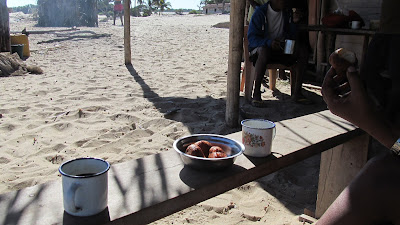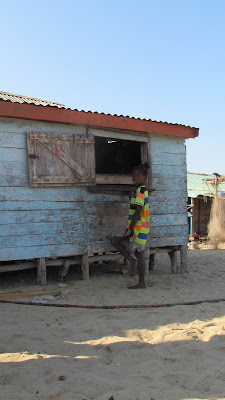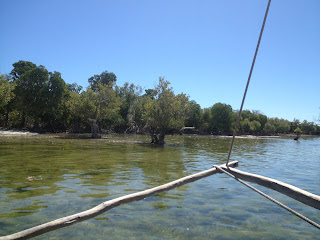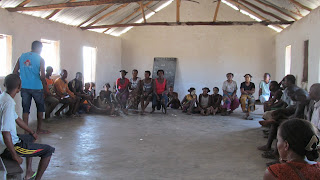I don’t know how 2019 was for you, but for myself and many of my friends it was one of the worst years we’ve ever experienced as job seekers. This, at a time when many companies are complaining they can’t find workers. What’s going on? Well, we aren’t computer programmers or health workers; we work primarily in conservation, environment and global development. But at a time when everyone’s going crazy about climate change, you’d think there would be more job openings rather than fewer. In any case, I’ve spent the last 10 years working short term contracts, the last 7 internationally and it seems that my greatest area of expertise just might be looking for work. I thought I’d pass some of that experience on, and hope it helps a few people.
The first caveat is that I’m Canadian, which greatly shrinks opportunities open to me. Yep, Canada is amazing, but we only have around 35 million people, which means fewer companies, smaller NGOs, and less money to invest in international development. This means that if you’re interested in working outside the country getting a work visa is a huge issue, especially if the job is based in the US, the UK or the EU. Canadians working overseas in the developing world are usually employed by international NGOs based in these regions, and they sponsor a work visa for the country of work - but upward mobility to a position in the home office may be delayed or blocked entirely.
The second caveat is that my job search starts with forestry, then goes to natural resources, then conservation. If you're a primatologist or a marine biologist some of these websites will list interesting positions, but there will be other, and maybe better sites specific to your specialty that I don't access.
One piece of advice: job hunting is the least fun thing you can do, hands down. But don’t make it worse for yourself. If you don’t meet the essential qualifications, especially with respect to required languages, degree/diploma or eligibility to work in the country, don’t waste your time applying. Move on and look at the next website. You’d be better off spending the time playing Minecraft than filling out a form or writing a cover letter for a job in Guatemala when all you know how to say in Spanish is “Hola!”.
Many of the websites on my list lean towards conservation and environment, but quite a few are larger organizations working across development sectors, and all of them are for overseas work, except for the few Canadian-based places I’ve thrown in at the end.
Generic Job listing websites:
https://www.devex.com/ : Searchable, global. A lot of their jobs are behind a paywall, but I just google the job title and location and can usually find the job listed somewhere else. Paywalls for job seekers are evil.
http://www.devnetjobs.org/ : This site lists a lot of the same jobs as on devex, but also seem to have more positions, and they have fewer behind their paywall. Again, paywalls, job seekers, evil.
https://www.environmentjobs.com/ : I've found my last 5 overseas jobs listed here (but also cross-posted elsewhere), although most postings are UK-based, as it is a UK site. There haven’t been as many listings recently as in the last few years, so I’m not sure if that’s down to the website or if it’s a shrinking international jobs market. No paywall ‘though, so yay! for that.
https://www.environmentjob.co.uk/jobs : This is another UK-based site with a few international jobs listed.
https://www.developmentaid.org/#!/home : Development Aid website, which is mostly a clearing house for job listings, several of which are behind an irritating paywall but can be found on other sites. Don’t pay them.
https://www.conservationjobboard.com/ : Mostly US-based work in conservation and forestry, but there are some international listings.
https://jobboard.openforests.com/ : This site has a few forestry, conservation or similar postings, mostly cross postings from other sites, but it also has academic opportunities in case you want to throw in the towel and go back to school.
There are four different websites managed through the UN:
https://unjobs.org/ : A clearing house job list, with positions that are often cross-posted on other sites; searchable.
https://jobs.undp.org/cj_view_jobs.cfm : These are positions with the UN. Watch the tags for “National” or “International” and apply appropriately. They must get hundreds of applications for each job, just because they’re so well known worldwide, so it’s a tough nut to crack.
https://jobs.unops.org/pages/viewvacancy/VAListing.aspx : A different UN site, for jobs in UN Operations, across several different sectors. Again, watch for the “National” or “International” tags.
https://www.unv.org/ : UN Volunteers, yes, but they’re looking for people with specific technical skills. And, I met a woman who was working as a UN Volunteer whose stipend was more than my salary with a British NGO. They call them volunteers probably to get around benefits and work visa requirements (don’t tell anyone). You have to register on the site, complete a profile, and then look for a position that might suit.
Career pages for international NGOs:
http://www.fao.org/employment/en/ : The Food and Agriculture Organization. I’ve only ever gotten one interview with them and they take forever to sort through resumes (think 6 to 8 months), but they now have a lot more Personal Service Agreements (PSAs) and contract positions instead of permanent positions, which I assume they want to fill quicker. The interview was ludicrous - questions about the FAO’s values and ways of working, which didn’t apply to the technical job requirements at all.
https://www.iucn.org/about/careers : The International Union for the Conservation of Nature often has very interesting jobs listed, but they’re another outfit that take a very long time to recruit.
https://www.worldwildlife.org/about/careers : This is the US website for the WWF. The World Wildlife Fund posts its international vacancies on each country’s website, which is a bit of a challenge to find them all. For example, this is the page for WWF Cambodia: http://www.wwf.org.kh/wwf_cambodia/job_opportunities/ . However, they’re all usually cross-posted on generic job lists. They actively recruit staff and if they’re interested in you, you’ll hear from them.
https://chu.tbe.taleo.net/chu04/ats/careers/v2/jobSearch?org=CONSERVATION&cws=39 : The careers page for Conservation International which I believe is a bit suspect. They have jobs posted on there for more than a year, who knows if they ever actually recruit anyone this way?
https://www.wcs.org/about-us/careers/in-the-field : The Wildlife Conservation Society careers page, which is searchable for international locations. They also frequently cross post their jobs on generic sites. They are relatively responsive and serious about recruiting, compared to some other large organizations.
https://www.nature.org/en-us/about-us/careers/ : The Nature Conservancy website for the US, with international positions listed here as well.
https://www.bioversityinternational.org/ : The rare opening can be found on the Biodiversity International website. They’re usually looking for fairly highly qualified researchers.
https://www.cifor.org/ : CIFOR, the Centre for International Forestry Research, rarely has job openings for international candidates and generally are looking for researchers.
http://www.worldagroforestry.org/ : Based in Kenya, rarely looking for international staff.
Organizations working in International Development through contracts / consultancies. These are businesses that bid on funded projects, but do much of the same work as NGOs in developing livelihoods, governance, food insecurity, etc.:
https://www.winrock.org/join-
https://www.tetratech.com/en/careers : Another US-based organization similar to Winrock with many international projects. Same deal: “Proposed” or “Project”.
https://www.wri.org/about/careers : The World Resources Institute is one for people not primarily interested in environmental jobs; they have a wide range of development projects.
https://socialimpact.com/ : Social Impact. This is one I ran across fairly recently, and haven’t found anything for myself, but they do have quite a few jobs listed. Again, be aware of whether the openings are “Proposed” (may happen sometime in the distant future) or “Project” (actively seeking staff).
Two of these based in Europe, although I’m sure there are tons more:
https://www.niras.com/jobs/vacant-positions/ : Niras, based in Denmark, is another organization bidding for development projects. Most of the permanent positions are located there or in Norway. However, they recruit consultants to work in developing countries where the projects are located.
https://jobs.giz.de/index.php?ac=search_result : This is the GIZ careers page, a German development organization which does a lot of work in support to small businesses and alternative livelihoods. A lot of the job titles are in German, but I think the international ones usually are also in English.
Want to stay home? Here are some Canadian sites:
https://www.canadian-forests.com/ : The go-to website for forestry jobs in Canada, but the vast majority are located west of Ontario. What’s up, Maritimes? Oh yeah, not a lot of jobs there.
https://www.idrc.ca/en/careers : The International Development Research Centre very rarely have openings but they are Canadian, which is a change. Funny story: after sending off my application for one of their positions, I reread my cover letter and saw that I had called them “IRDC” throughout. Didn’t get a call. (Hi, IDRC! Sorry about that.) The lesson, of course, is triple-check the documentation you’re sending. Last month I found two typos in the CV I’d been mailing out for years. Luckily, no one reads right through those anyways.
https://www.iisd.org/about/employment-and-consulting : Another Canadian organization, the International Institute for Sustainable Development; very rarely has openings.
http://www.cwf-fcf.org/en/about-cwf/jobs/ : The Canadian Wildlife Federation might have an opening every month or so, right across the country.
http://www.natureconservancy.ca/en/who-we-are/work-with-us/ : Nature Conservancy Canada has some interesting jobs occasionally, again, right across the country.
Some sites I haven’t included (looking at you, Rainforest Alliance) because they post their jobs for quite literally months and/or years, so it seems unlikely they are serious about actually picking up your resume and reading it. Smaller NGOs (ZSL, the RSPB) will post their jobs on the generic sites, although it’s always worthwhile to keep your own list of smaller organizations if you’re interested in working for them specifically just in case something pops up.
I could go on; if you know your preferred location, there are several more generic lists like Glassdoor, Linked In, Indeed, etc. Those irritate the hell out of me because you can’t search by sector or job title only - you need to enter a city or country, and can’t search over a large region like “Southeast Asia” or “Africa”. When it comes to voluntourism organizations, some of them may be good for getting your first international experience, but could also turn out to be just a way to empty your pocket in a tropical location. And of course, if you're looking just in Canada, there are lots of government (both federal and provincial) and company websites - the generic lists are often pretty good for those postings too.
So, good luck! I'm keeping all my fingers and toes crossed for you (and me too). Here's hoping 2020 smashes 2019 in everything including the job market.
P.S. Do you know of other great sites? List them in the comments, and we all benefit.



































































